4 Free Activities from New Ways in Teaching Vocabulary, Revised
Averil Coxhead, Editor
Vocabulary is important in teaching and learning a language. In some ways, it is a central building block for all learners. It is unlikely that any language learner ever wished he or she had a smaller vocabulary.
New Ways in Teaching Vocabulary, Revised, brings together a wide range of vocabulary-focused activities for language teachers. These activities can be used as they are or adapted to fit particular classrooms, learners, proficiency levels, technology, or needs. Download these four free activities to use with your students today.
|
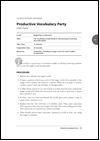
Productive Vocabulary Party
Levels: Beginning to advanced
This activity is a good way to introduce weekly vocabulary, showing students how to use the target words productively. |
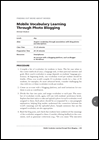
Mobile Vocabulary Learning Through Photo Blogging
Levels: Any
This activity helps students acquire vocabulary through blogging. |
|
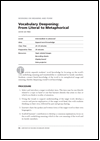
Vocabulary Deepening: From Literal to Metaphorical
Levels: Intermediate to advanced
This activity expands students' word knowledge by focusing on the word's core underlying meaning and transferability to understand its family members. |
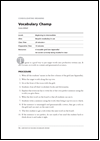
Vocabulary Champ
Levels: Beginning to intermediate
This game is a good way to put target words into productive written use while focusing on words in context and grammatical accuracy. |
Buy New Ways in Teaching Vocabulary, Revised, at the TESOL Bookstore, and check out the entire New Ways series.
*These activities may be reproduced for educational uses only.
© TESOL International Association.
TC Monthly Giveaway Congratulations to Megan Wright, from Kirksville, Missouri, USA, for being the winner of the October 2015 TESOL Connections Monthly Giveaway. Megan has won a free gift membership to TESOL International Association to share with a colleague.
This month, TESOL is giving away
a free book on assessment,
Assessing English Learners in U.S. Schools*
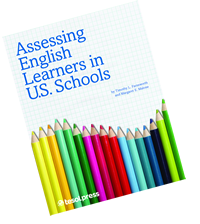
This book examines classroom assessment (not standardized assessment) through the lenses of three ESL teachers from across the United States. The teachers face a number of challenges particular to their individual situations, and other challenges common to all U.S. public school teachers.
*Winner may opt to receive New Ways in Classroom Assessment, Revised, instead.
Click here to enter
Drawing closes 21 November 2015, 11:59 pm EST
TESOL Blogs Interested in writing a blog for TESOL?
Read the submission guidelines and send us your post!
Check out the latest TESOL Blogs:
|
Assimilated or Acculturated? Helping Students Navigate Two Worlds, by Nathan Hall
 I like to use current events in my ELL classes, but I hate seeing immigration in the news. This politically touchy subject comes up everywhere from the presidential candidate debates to my own state’s legislature, where politicians want to make English the official language to save on translation fees (exactly how much they’ll save is never specified). One of the bill’s defenders said denying these services will “help immigrants to assimilate.” I like to use current events in my ELL classes, but I hate seeing immigration in the news. This politically touchy subject comes up everywhere from the presidential candidate debates to my own state’s legislature, where politicians want to make English the official language to save on translation fees (exactly how much they’ll save is never specified). One of the bill’s defenders said denying these services will “help immigrants to assimilate.”
Without going into my political problems with this legislation, the part that struck me was the idea of promoting assimilation. It made me think of an excellent book I read in graduate school, The Inner World of the Immigrant Child by Christina Igoa. The author grew up in many different countries and later became sympathetic to the plight of her English-language-learning students. She describes how damaging the pressure is for children to give up their native culture to fit into a new one that often seems unwelcoming. Read More. |
|
Spelling deMYTHtified: 7 Insights for Language Teachers, by Karen Taylor de Caballero
 It’s been sent to you dozens of times by well-meaning friends and family. Perhaps you’ve forwarded it to folks in your own address book, or perhaps you’ve even developed a pronunciation lesson around it, as I did several years ago. It’s been sent to you dozens of times by well-meaning friends and family. Perhaps you’ve forwarded it to folks in your own address book, or perhaps you’ve even developed a pronunciation lesson around it, as I did several years ago.
It’s a meme, really, one that simultaneously bemoans and celebrates the idiosyncrasies of spoken vs. written English. It might go like this:
Crazy English (anonymous)
We’ll begin with box, and the plural is boxes,
But the plural of ox should be oxen, not oxes.
Then one fowl is goose, but two are called geese,
Yet the plural of moose should never be meese…
Read More |
|
4 Pathways to a Culturally Responsive Classroom, by Judie Haynes
 Culturally relevant or responsive teaching is a pedagogy grounded in the idea that educators teach to students’ unique cultural strengths. Geneva Gay is one of the early leaders in this field, and her book Culturally Responsive Teaching: Theory, Research, and Practice (2000) became popular as a way to teach ethnically diverse students. Early work in this field focused on African American and Native American students in the United States. Culturally relevant or responsive teaching is a pedagogy grounded in the idea that educators teach to students’ unique cultural strengths. Geneva Gay is one of the early leaders in this field, and her book Culturally Responsive Teaching: Theory, Research, and Practice (2000) became popular as a way to teach ethnically diverse students. Early work in this field focused on African American and Native American students in the United States.
In 2004, I published an article on my website entitled ESL Teacher as Cultural Broker after hearing James Banks speak on multicultural education. I urged classroom and content-area teachers to avoid interpreting the behavior of others through the eyes of their own culture. Read More. |
|
Calling All Collaborators for PLCs, by Kristen Lindahl
 In teacher education and development, much of the focus is on classroom practices, toolkits, strategies, curriculum mapping, and so on. Less of the focus shines light on teachers themselves as communicators, even though they communicate daily with their students, administrators, colleagues, parents, and community members. (See Wong-Fillmore and Snow, 2000, for a discussion of the many roles of teachers). As a teacher educator, one skill that I feel we assume future and current teachers have is the ability to effectively collaborate. Read More. In teacher education and development, much of the focus is on classroom practices, toolkits, strategies, curriculum mapping, and so on. Less of the focus shines light on teachers themselves as communicators, even though they communicate daily with their students, administrators, colleagues, parents, and community members. (See Wong-Fillmore and Snow, 2000, for a discussion of the many roles of teachers). As a teacher educator, one skill that I feel we assume future and current teachers have is the ability to effectively collaborate. Read More.
|
TESOL Bookstore

Featured Resources from TESOL Press
English Language Teacher Development Series: PDF Bundle
Series Editor: Thomas S. C. Farrell
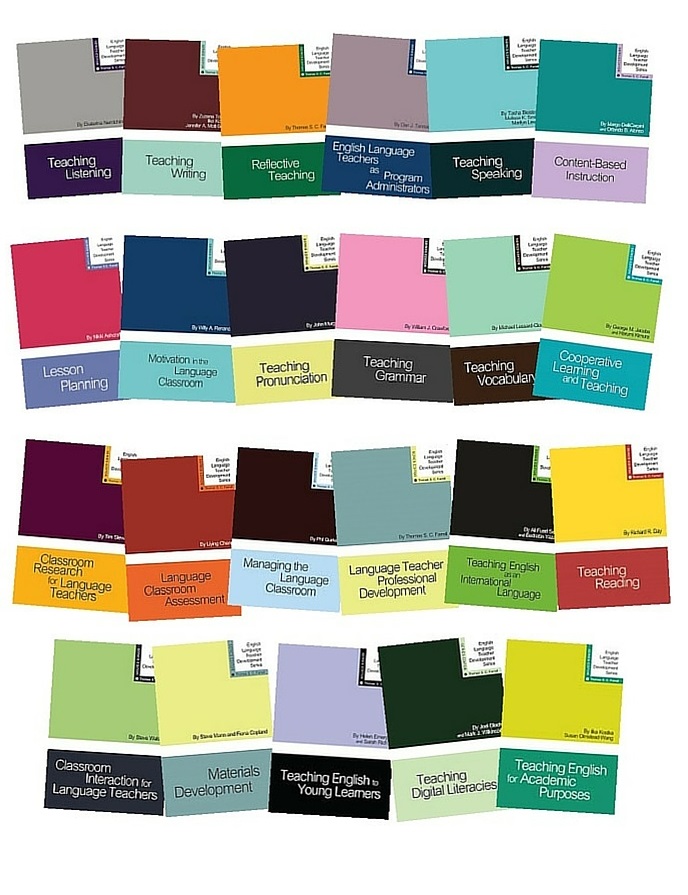
What's the latest research, and how do I use it in my classroom? Keeping updated is an ongoing task for a profession that continuously reinvents itself. These short, accessible reference tools are of immediate relevance to practicing teachers in the ESL, EFL, EIL, and ESOL classrooms. Ideal for ESOL master's programs and skills courses. Get all 23 titles in PDF format with this series bundle.
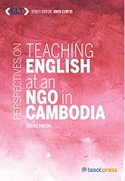 Perspectives on Teaching English at an NGO in Cambodia Perspectives on Teaching English at an NGO in Cambodia
Nicole Takeda
This newest volume in the ELT in Context series presents firsthand accounts of the considerable challenges and difficulties facing English language teachers working with learners in poverty, on between $1 and $2 US dollars per day. In spite of extremely resource-poor environments, learn how the author and her colleagues have created a haven of educational hope and possibilities for students from the lowest income families.
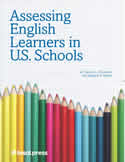 Assessing English Learners in U.S. Schools Assessing English Learners in U.S. Schools
Timothy L Farnsworth and Margaret E Malone
Why assess? And what will I do with the results? This book examines classroom assessment (not standardized assessment) through the lenses of three ESL teachers from across the United States. Short reflections, jargon sidebars, and chapter activities make this an enjoyable, user-friendly resource for teachers in any classroom.
|
 |
|
|
 |
| Director of the English Language Institute, The University of Alabama at Birmingham, Birmingham, Alabama, USA
Adjunct EFL Instructors (Spring Semester), Clark University, China
Senior Lecturer, ESOL (Nontenure Track), Syracuse University, Syracuse, New York, USA
Director of ELI and Correspondence Education, Oklahoma State University, Stillwater, Oklahoma, USA
ESL Lecturer (Core Faculty Member), University of North Carolina at Charlotte, Charlotte, North Carolina, USA
Want to post your open positions to Job Link? Click here.
To browse all of TESOL's job postings, check out the TESOL Career Center. |
 |
|
 |
| ADVERTISEMENT |
 |
 |
|